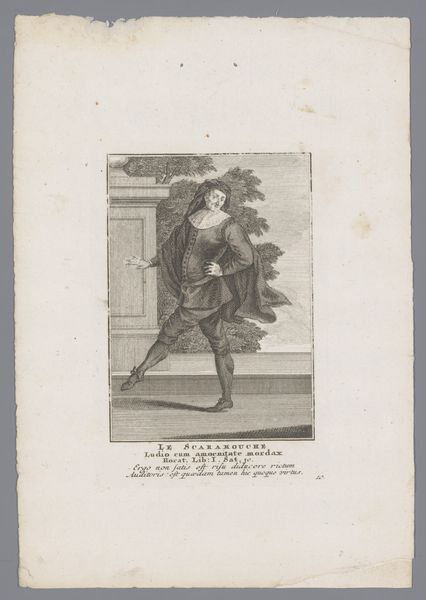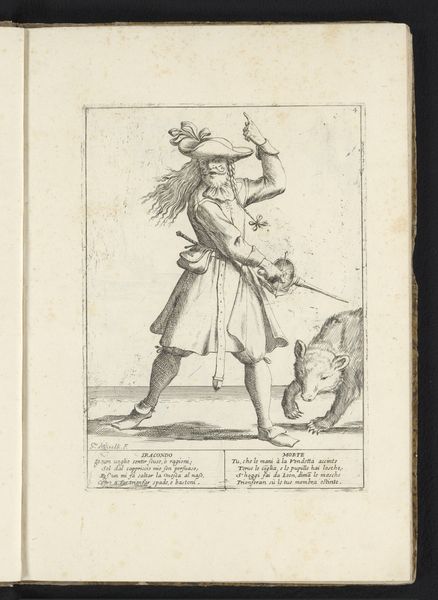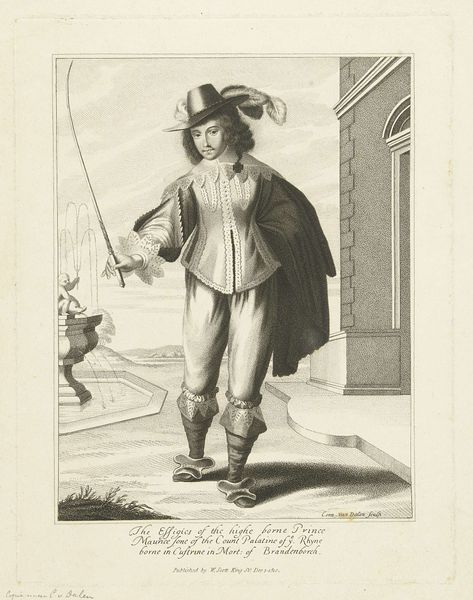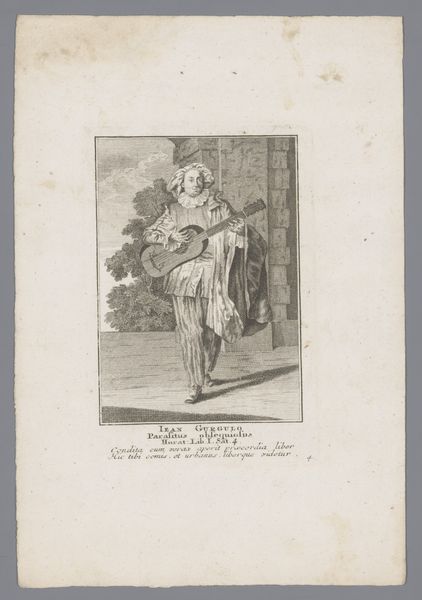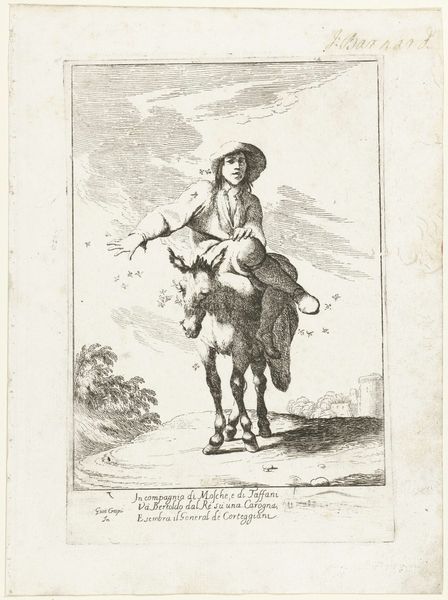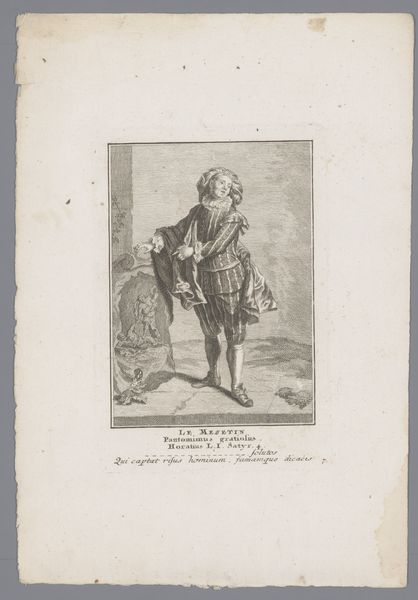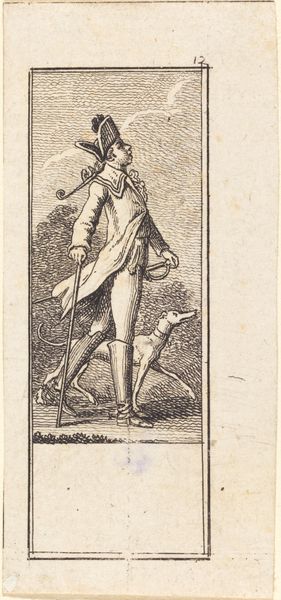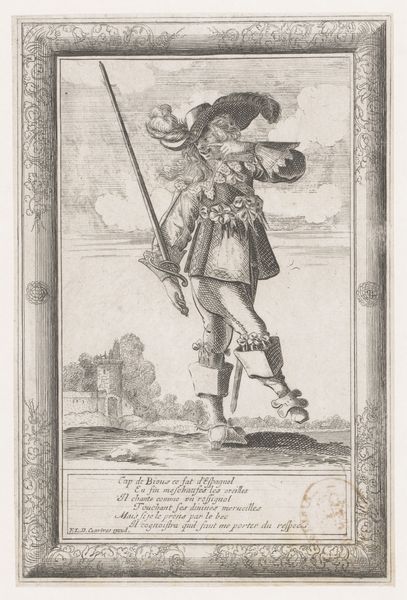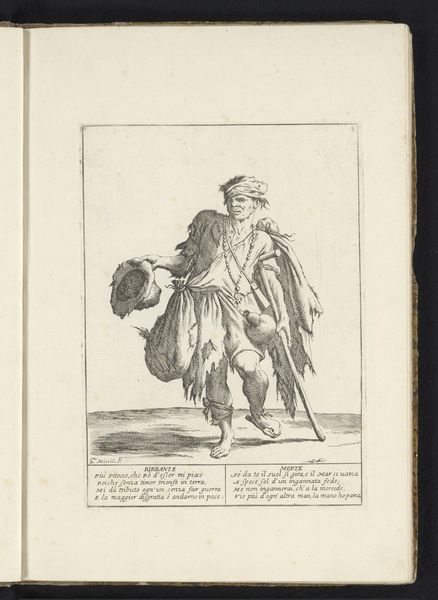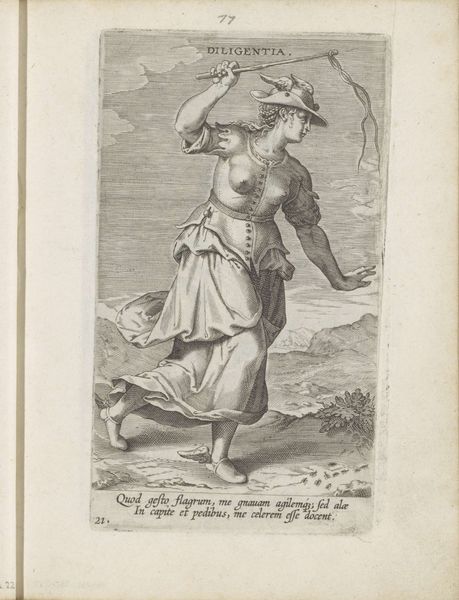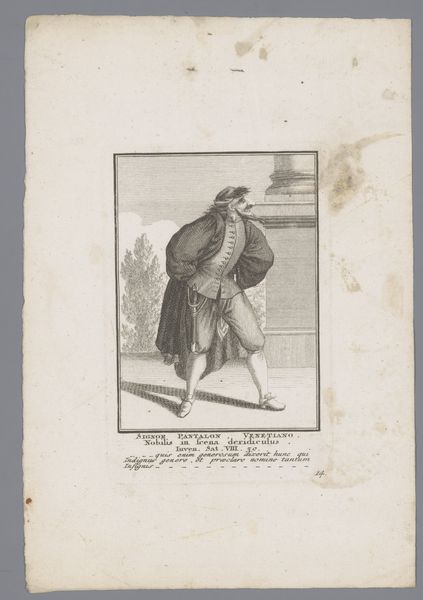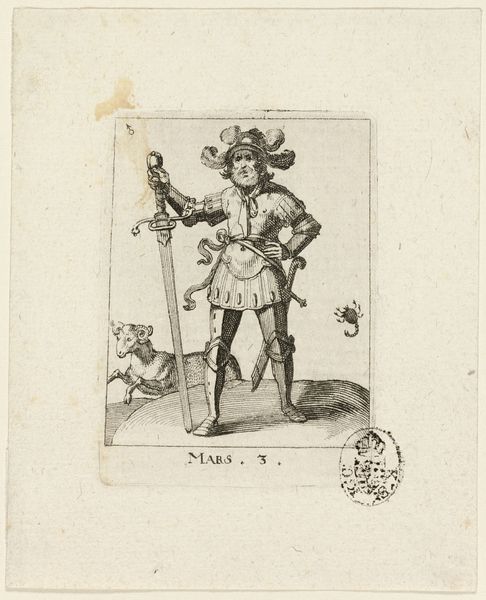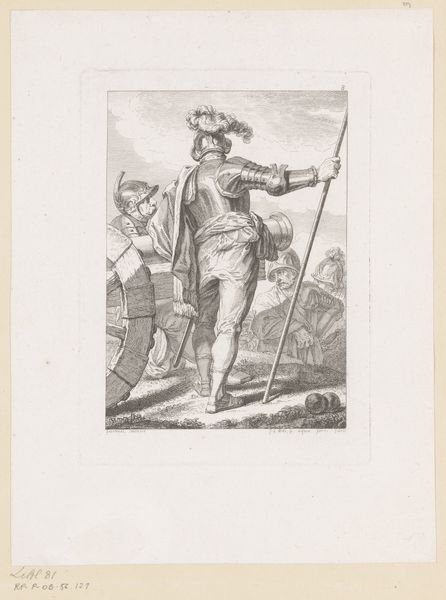
Dimensions: height 136 mm, width 117 mm
Copyright: Rijks Museum: Open Domain
Curator: Pieter Langendijk’s engraving, "Beggar with Two Crutches and a Wooden Leg," created around 1770, offers a fascinating glimpse into 18th-century Dutch society through figuration. The style and technique suggest the work is not simply documentary but rather invites engagement. Editor: It strikes me immediately as unsettling. There's an imbalance visually; the figure is emaciated, yet his expression holds an unsettling smirk, challenging our expectations of the destitute. I think its grim. Curator: Well, socio-historical factors are crucial here. The print comes at a time when depictions of poverty were common in art, but also increasingly politicized, particularly due to debates about the management of poor houses. Engravings like this had a very practical distribution within society. Editor: I can see the immediate significance given those specific political arguments around poverty, of using art this way. Who did they circulate amongst and what exactly do they represent in regard to gender, race, and politics? Was this artwork a comment on labor exploitation and unequal systems? Curator: Certainly. This print, with its genre painting, it would circulate amongst a merchant class and would play into contemporary assumptions about disability, idleness and begging. The historical understanding that we have around disability rights can completely contextualize it to have it tell different meanings that would perhaps inform our present understandings of that. It might even show how these ableist narratives continue into our current age. The smirk on his face disrupts these readings, complicates them in fact. Editor: Exactly! This disruption—or I might even read it as resistance—is key. It challenges the normative gaze. He meets our eye and upends that power structure within a historical argument in modern interpretation. This image creates a conversation about visibility and marginality across time periods. We see similar themes reflected now. What kind of dialogues does the artwork facilitate? Curator: Langendijk's print is indeed more than a historical snapshot; it actively prompts us to examine power, representation, and enduring societal prejudices. This serves a social commentary that extends far beyond its period origins and, more specifically, gives audiences some understanding in ableist assumptions and how we continue to operate to this current day. Editor: Absolutely, seeing it allows us to recontextualize issues related to identity, gender, race and political movements which provide tools to critically analyse our own cultures. That is the magic.
Comments
No comments
Be the first to comment and join the conversation on the ultimate creative platform.
